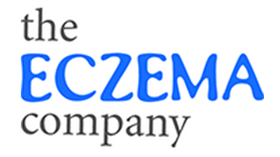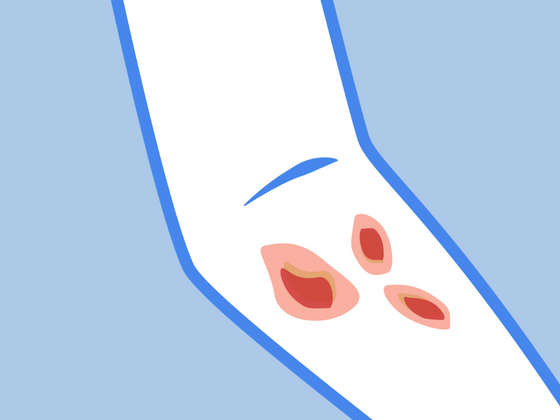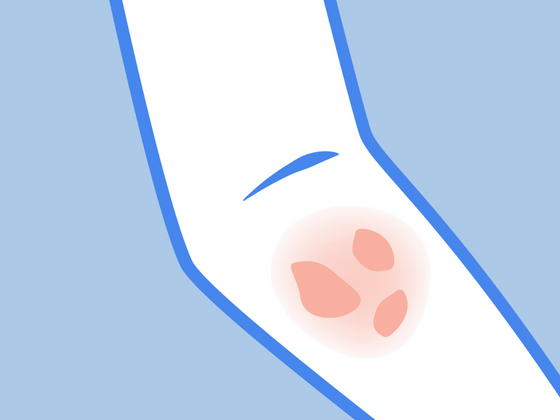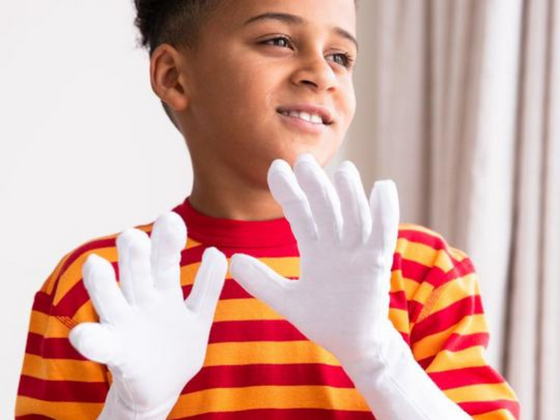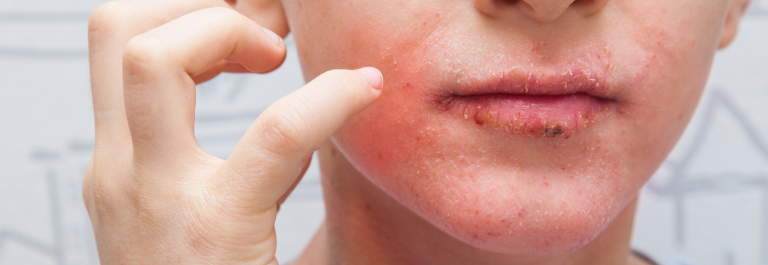Managing severe eczema, including atopic dermatitis and dyshidrotic eczema, often involves finding effective ways to alleviate symptoms and protect the skin. One of the most practical solutions is using specialized bandages designed for eczema-prone skin. These bandages offer relief by creating a moist, protective environment that helps soothe irritation, promote healing, and reduce scratching.
In this post, we explore:
-
How bandages work for eczema
-
Step by step guide to applying eczema bandages
-
Tips to get the most out of it and soothe your skin
Keep reading to find out how bandages can help your eczema prone skin.
What is Eczema?
Eczema, also known as atopic eczema is a chronic skin condition that starts in childhood and can continue into adulthood. It causes dry, itchy skin, with symptoms ranging from mild irritation to severe inflammation and weeping blisters. For some, eczema flare ups are seasonal, for others it’s a year round battle. Common triggers are irritants like harsh soaps, detergents, allergens and environmental factors like extreme temperatures.
Among the different types of eczema, dyshidrotic eczema is characterized by small, super itchy blisters on the hands and feet. This type can be very painful and oozing and weeping skin makes it harder to treat and recover. Whether it’s facial eczema, hand eczema or more generalised outbreaks, soothing the skin and reducing irritation is key to eczema management.
Bandages in Eczema Treatment
Bandages for eczema are an added bonus to your skincare routine. These bandages, like those used in wet wrap therapy are designed to keep the affected areas moist and protected. Unlike regular bandages, eczema bandages are made from materials that are gentle on the skin and promote healing.
Benefits of wet wrap dressings for eczema:
Moisture Retention
Keep the skin from drying out and cracking which is common in eczema.
Protection from Irritants
Acts as a barrier against environmental triggers like allergens and friction from clothing that can worsen eczema symptoms.
Enhanced Healing
The moist environment created by these bandages promotes faster skin recovery, reduces inflammation and discomfort.
Reduces Scratching
Covering the affected area with a bandage reduces the urge to scratch and prevents further irritation and infections.
Targeting Specific Areas: Hands, Feet and more
Bandages for eczema are great for managing flare ups on sensitive areas like hands, feet and face. Two types of bandages that stand out for their effectiveness are eczema sleeves and hydrocolloid dressings.
1. Eczema Sleeves
Remedywear™ (TENCEL + Zinc) Sleeves/Bandages for Babies to Adults are a popular choice for eczema on hands and arms. These sleeves are made from a blend of TENCEL® and zinc infused fabric, soft, breathable and moisture retaining. Additionally, the zinc has natural anti-inflammatory properties that soothes itching and irritation. We love how the sleeves acts as a barrier against environmental triggers and reduces the urge to scratch making them perfect for children and adults with eczema on arms and hands.
2. Hydrocolloid Bandages
Hydrocolloid bandages for eczema are another good option for irritated skin, especially for weeping blisters and severe flare ups. These bandages are made from a moisture retaining material that forms a gel when it comes into contact with the skin. This gel creates a moist environment that promotes healing and prevents the skin from drying out and cracking. Hydrocolloid bandages are perfect for areas with intense irritation and weeping eczema, it acts as a barrier and reduces the risk of infection and further damage.
For eczema on the feet, a hydrocolloid dressing is particularly great because it keeps the wounds moist and protected from friction from shoes that can worsen symptoms. Additionally, eczema sleeves or bandages on hands and feet acts as a barrier, maintains moisture and reduces the risk of infection.
How to apply bandages for eczema
Wet wraps provides quick relief for dry or weeping eczema but can be tricky to apply, especially for children. This method is best for moderate to severe eczema. Here’s a simple guide to get you started:
Prepare the Skin:
Soak the area in lukewarm water for 15-20 minutes. Lukewarm water is better than hot water that can dry out the skin.
Dry Gently:
Pat dry with a soft towel. Don’t rub as it can worsen eczema symptoms.
Apply Treatment:
Apply a natural eczema cream or ointment on the area like our Nourish + Hydrate Manuka Balm
Apply the Bandage:
Cover the area with eczema-friendly bandage or clothing like the Remedywear bandages mentioned above.
Leave in Place:
Wear the bandage overnight or at least 2 hours to allow moisture to be absorbed and healing to occur.
Reapply Moisturizer:
After removing the bandage, re-apply moisturizer.
Repeat this process 2-3 times a day depending on the severity of eczema and your skin needs.
Soothe your Eczema Today
By using bandages in your eczema care, along with topical treatments and moisturizing, you can protect your skin, calm irritation and heal.
